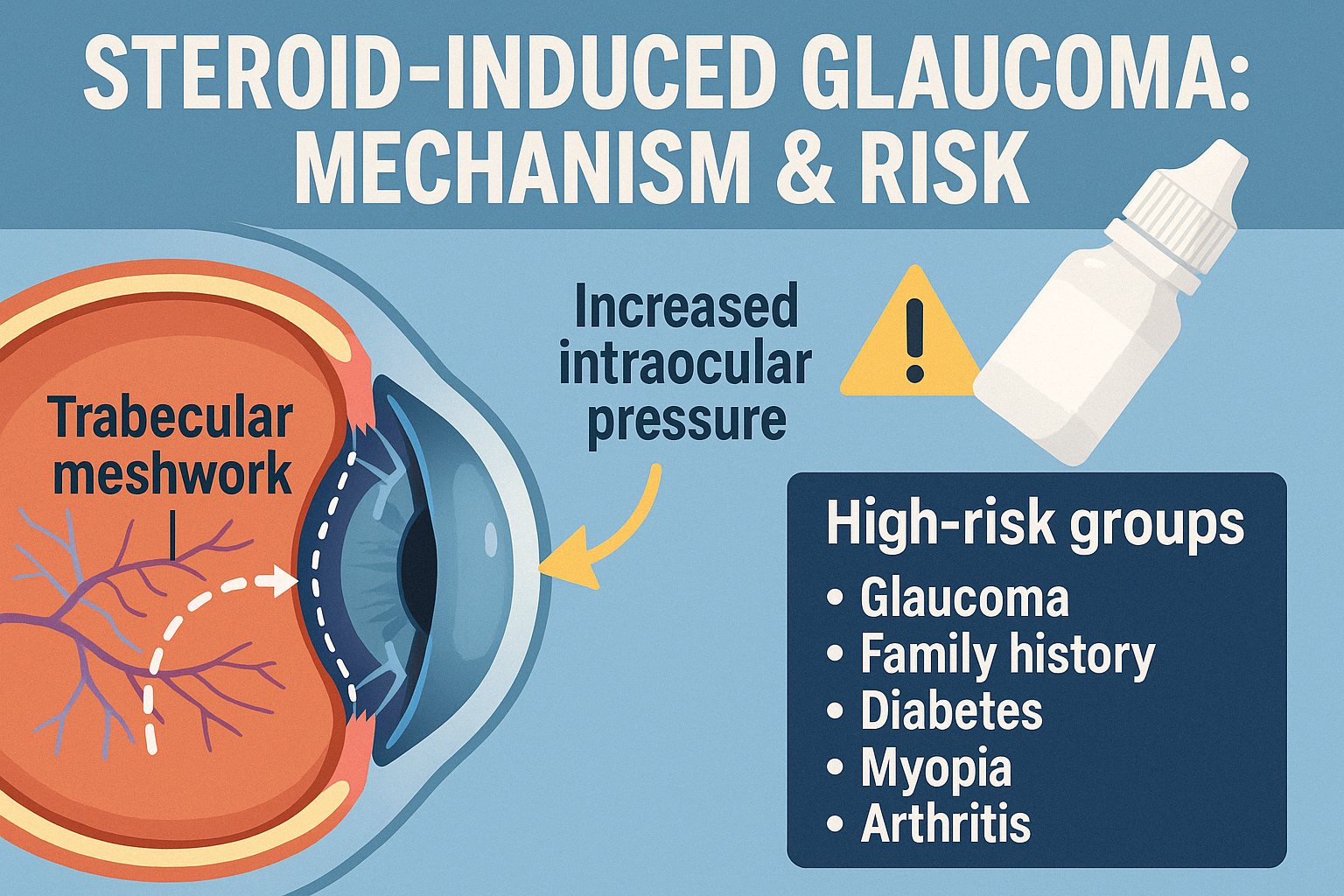Tistoryview
Disease&Treatment/Glaucoma
Steroid-Induced Glaucoma (SIG)?, steroid induced IOP increase
eye_doc 2025. 4. 19. 23:21
👁 What is Steroid-Induced Glaucoma (SIG)?
Steroid-induced glaucoma (SIG) is a form of secondary glaucoma
caused by elevated intraocular pressure (IOP) after using steroids,
whether topical, periocular, systemic, or injected.
🔬 Mechanism of SIG
- Steroids alter trabecular meshwork structure
- ↑ ECM (extracellular matrix) deposition
- ↓ Phagocytic activity → waste builds up
- → Outflow resistance increases → IOP rises
📊 IOP Response Rate (Armaly Study)
ReactionIncidence
| Minimal (<5 mmHg) | 66% |
| Moderate (6–15 mmHg) | 30% |
| High (>15 mmHg) | 5% |
Roughly 1 in 3 individuals may be a steroid responder
👥 High-Risk Steroid Responders
- Glaucoma patients / family history
- Diabetes, hypertension
- High myopia, connective tissue diseases
- Children under 6, elderly
💧 Risk by Route of Administration
MethodRisk Level
| Periocular injection | Very high |
| Topical drops/ointments | Common and significant |
| Systemic / skin creams | Lower risk |

💊 Drug Risk Classification
CategoryExamples
| High-risk | Dexamethasone, Prednisolone |
| Low-risk | Rimexolone, Loteprednol, Fluorometholone |
- Fluorometholone is the safest and most widely used
- Combination formulations (e.g., with antibiotics) need monitoring
✅ Summary
- Steroids can cause IOP elevation and glaucoma
- Regular IOP monitoring is critical, especially in high-risk groups
- Dose reduction or switching to low-risk steroids may be needed
- Refractory cases may require laser or surgical intervention
